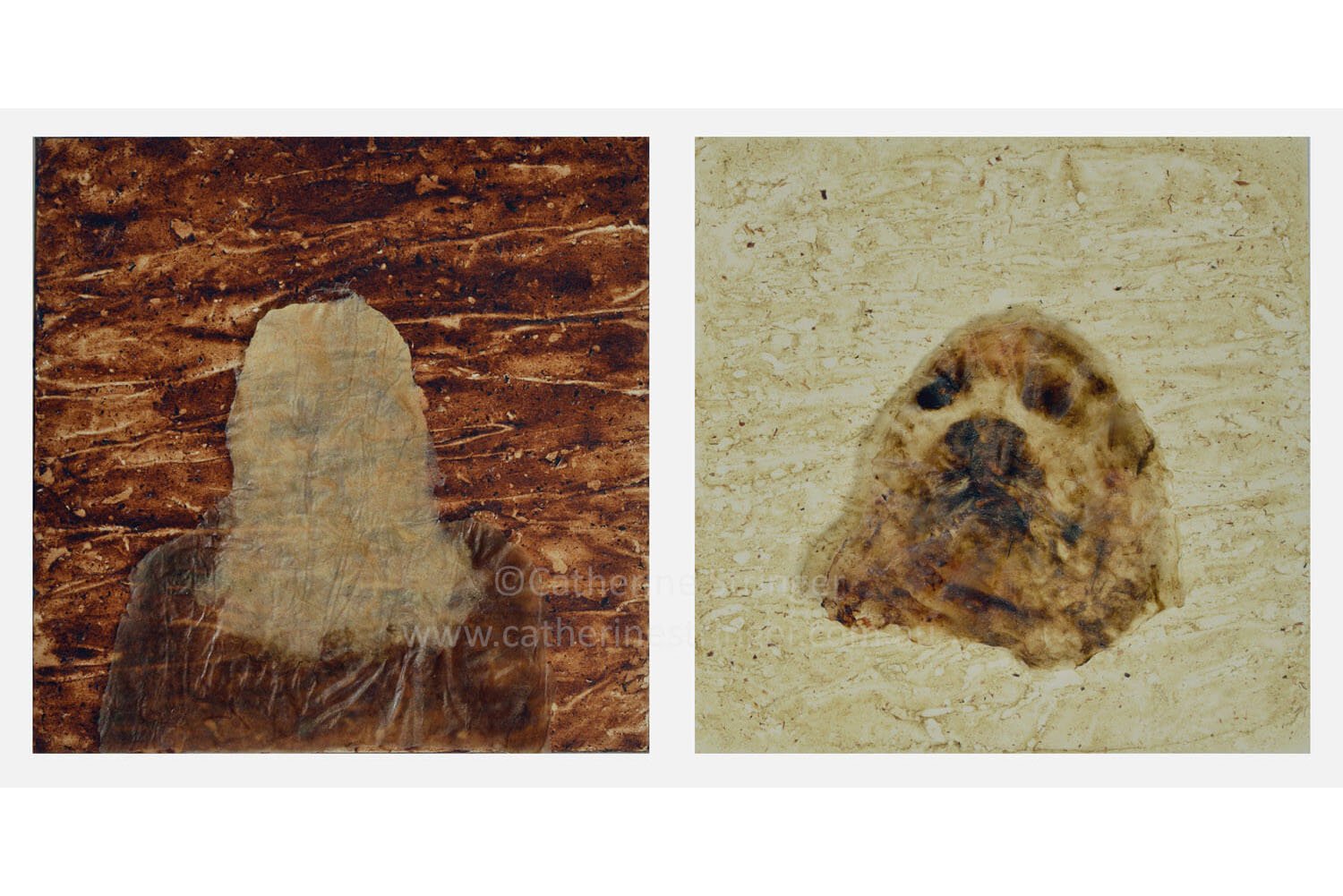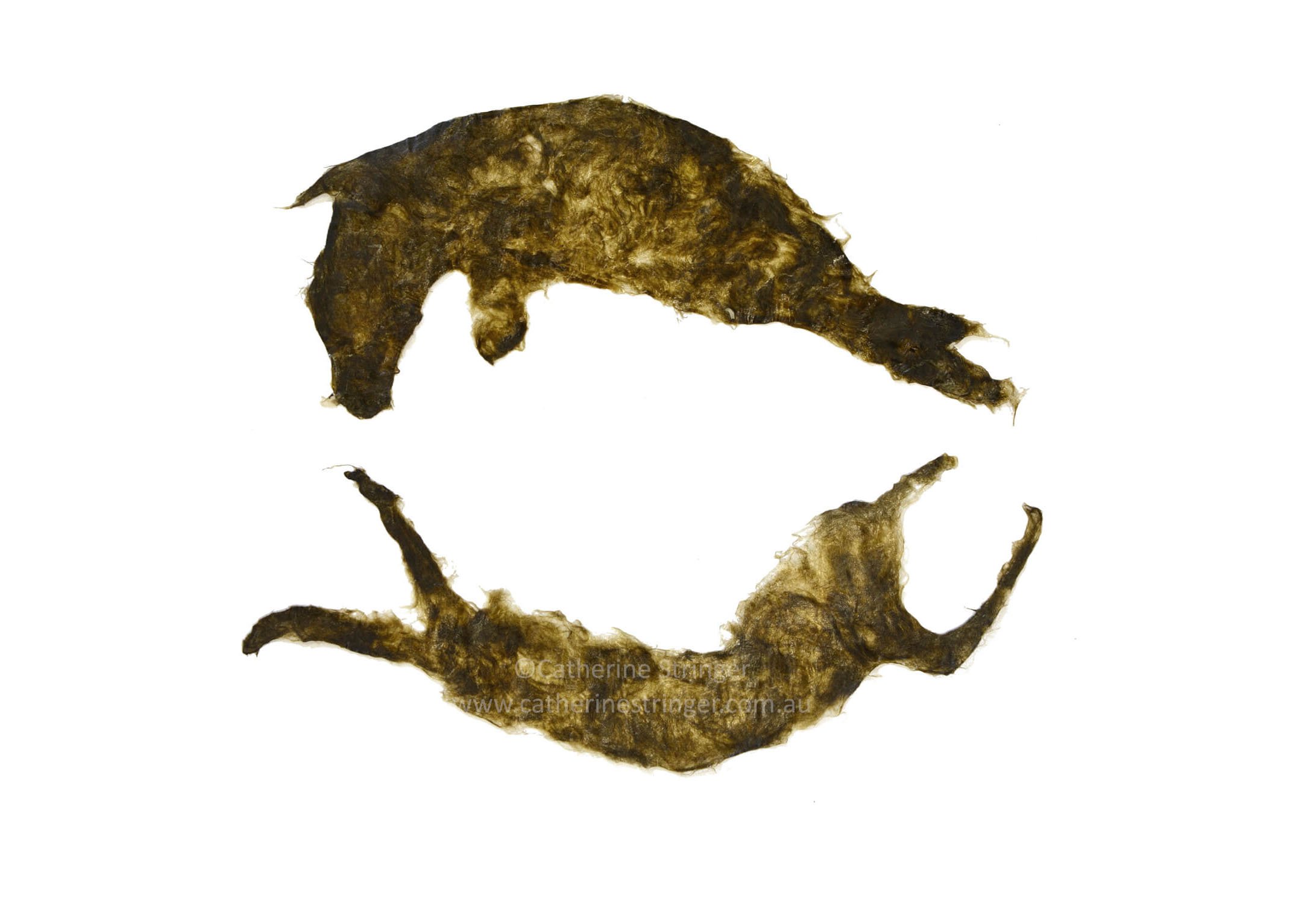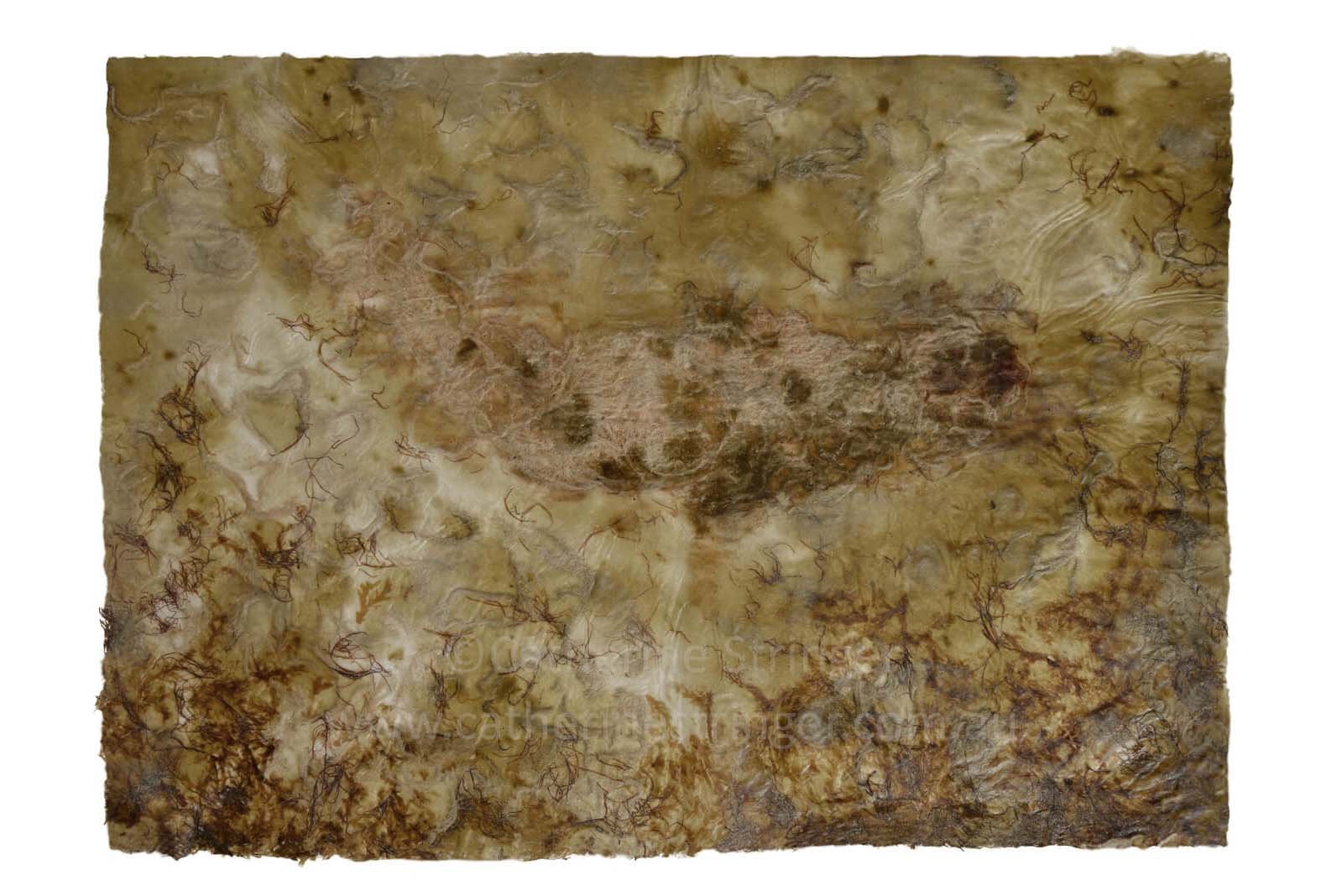Seal Woman
In the Icelandic folk tale of the seal skin, the seal woman could slip easily from seal to human form by removing her sealskin. One day whilst she danced on the shore as a woman her sealskin was stolen by a man who locked it in a chest, thus trapping her ashore. She ended up marrying the man and they had seven children, but she always yearned for the sea.
After many years the woman found the key to the chest, and returned to the sea. She was heard to cry:
“Woe is me
I have seven children in the sea
And seven on land”
She was thereafter torn between two families, two worlds. When the man went fishing, a seal would often swim around his boat with tears seeming to run from its eyes, and when her children walked along the shore, a seal would often swim close by and throw them fish. But their mother never returned to land.
I was introduced to seal skin story during a residency in Iceland in 2017, where I was investigating the Icelandic seaweeds and mosses as materials for papermaking. Dualities, separation, loss and transformation, utilising the visual language of water, have been recurring themes in my art practice, and I was particularly drawn to this story.
Seaweed pulp is an especially appropriate medium with which to interpret the sealskin story. Like seals, seaweeds live most of their lives in the sea, but sometimes inhabit the liminal zone between sea and land, and to form paper it must go through a process of transformation.
Each different seaweed has its own individual properties, and becomes an active participant in the image making process. I have incorporated a range of techniques to create the works in Seal Woman, some of which originate from my Iceland residency; others have been made since my return, using Tasmanian seaweeds. I am continuing to experiment and explore the potential of this wonderful medium.
All works are available for purchase unless marked as sold.



















